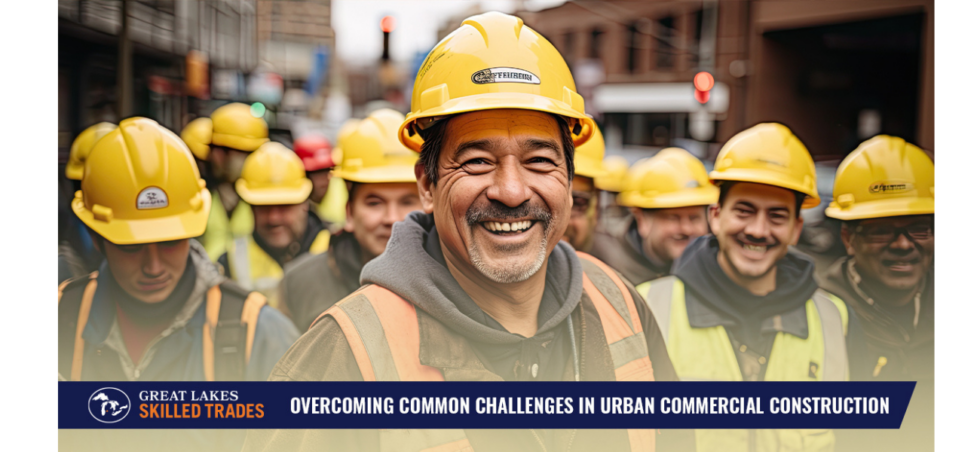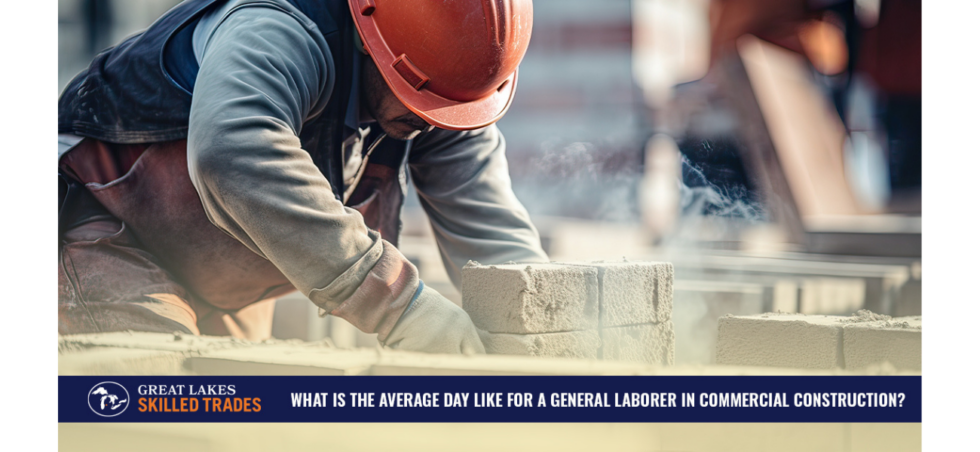It’s summer in the Great Lakes region, and that means sunshine. Lots of it.
Construction is always a dangerous job, but in the summer months the heat can make all activities even more dangerous. It’s crucial that skilled tradespeople working in non-climate-controlled environments stay cool to stay safe.
During the summer, contractors need to take steps to make sure their teams avoid heat-related illnesses.
Heat Stroke is the most serious heat-related health problem. Heat stroke occurs when the body’s temperature-regulating system fails and body temperature rises to critical levels (greater than 104°F). This is a medical emergency that may result in death!
The signs of heat stroke are confusion, loss of consciousness, and seizures. Workers experiencing heat stroke may stop sweating.
Heat Exhaustion is the next most serious heat-related health problem. The signs and symptoms of heat exhaustion are headache, nausea, dizziness, weakness, irritability, confusion, thirst, heavy sweating, and a body temperature greater than 100.4°F.
Workers with heat exhaustion should be removed from the hot area and given liquids to drink. Cool the worker with cold compresses to the head, neck, and face, or have the worker wash his or her head, face, and neck with cold water. Encourage frequent sips of cool water.
Workers with signs or symptoms of heat exhaustion should be taken to a clinic or emergency room for medical evaluation and treatment. Make sure that someone stays with the worker until help arrives. If symptoms worsen, call 911 and get help immediately.
Heat Cramps are muscle pains usually caused by the loss of body salts and fluid during sweating. Workers with heat cramps should replace fluid loss by drinking water and/or carbohydrate-electrolyte replacement liquids (e.g., sports drinks) every 15 to 20 minutes.
Heat Rash is the most common problem in hot work environments. Heat rash is caused by sweating and looks like a red cluster of pimples or small blisters. Heat rash may appear on the neck, upper chest, groin, under the breasts, and elbow creases. The best treatment for heat rash is to provide a cooler, less humid work environment. The rash area should be kept dry. Powder may be applied to increase comfort.
Ointments and creams should not be used on a heat rash. Anything that makes the skin warm or moist may make the rash worse.
Here are some simple tips to avoid heat-related illnesses:
Stay hydrated—OSHA recommends drinking cool water even if you’re not thirsty—at least 1 cup every 20 minutes. Sweating removes needed salt and minerals from the body. Drink more water, juice, and sports drinks. Avoid drinks with caffeine (tea, coffee, and cola) and alcohol. And remember, hydration starts the night before.
Take rest breaks in the shade—Pace yourself. If you’re a new or returning worker who’s not yet acclimated to working in the heat, take more frequent breaks until you build up your tolerance.
Wear appropriate clothing—Choose lightweight, light-colored, loose-fitting clothing.
Wear sunscreen—Sunburn affects your body’s ability to cool down and can make you dehydrated. Apply sunscreen of SPF 15 or higher 30 minutes prior to going out. Continue to reapply it according to the package directions.
Look out for each other—Workers may need to ask each other questions about how they are feeling during the workday to assess for signs of heat-related illness among their co-workers. OSHA says to be on the lookout for headaches, nausea, weakness/dizziness, heavy sweating or hot dry skin, elevated body temperature, thirst or reduced urine output. In the event of any of these warning signs, move to a shady/cool spot, take off any unnecessary clothing, drink water, and otherwise cool down with ice and a fan, if possible.
Although illness from exposure to heat is preventable, every year, thousands become sick from occupational heat exposure, and some cases are fatal. Make sure you’re staying safe in the summer heat.








